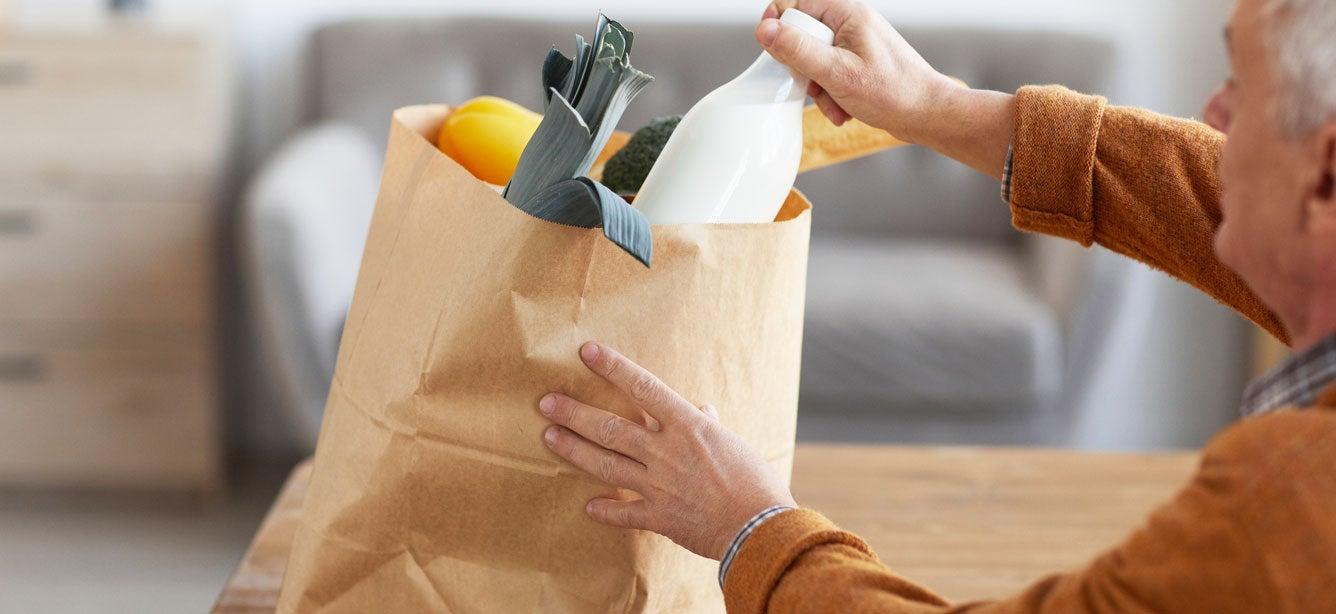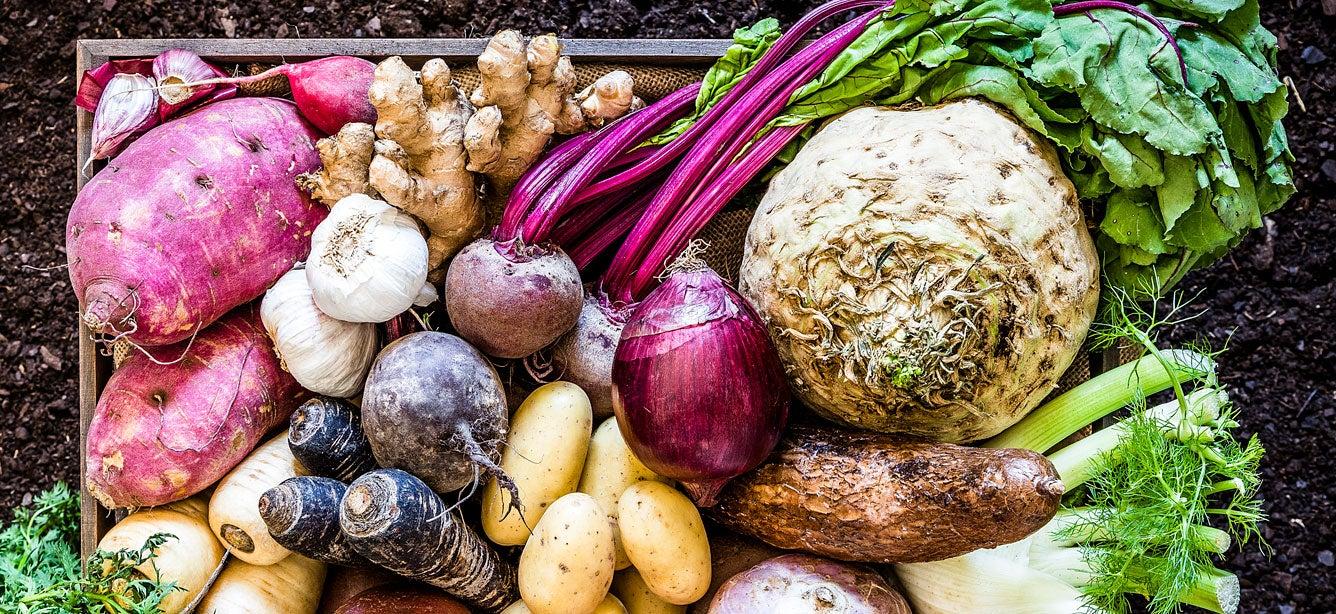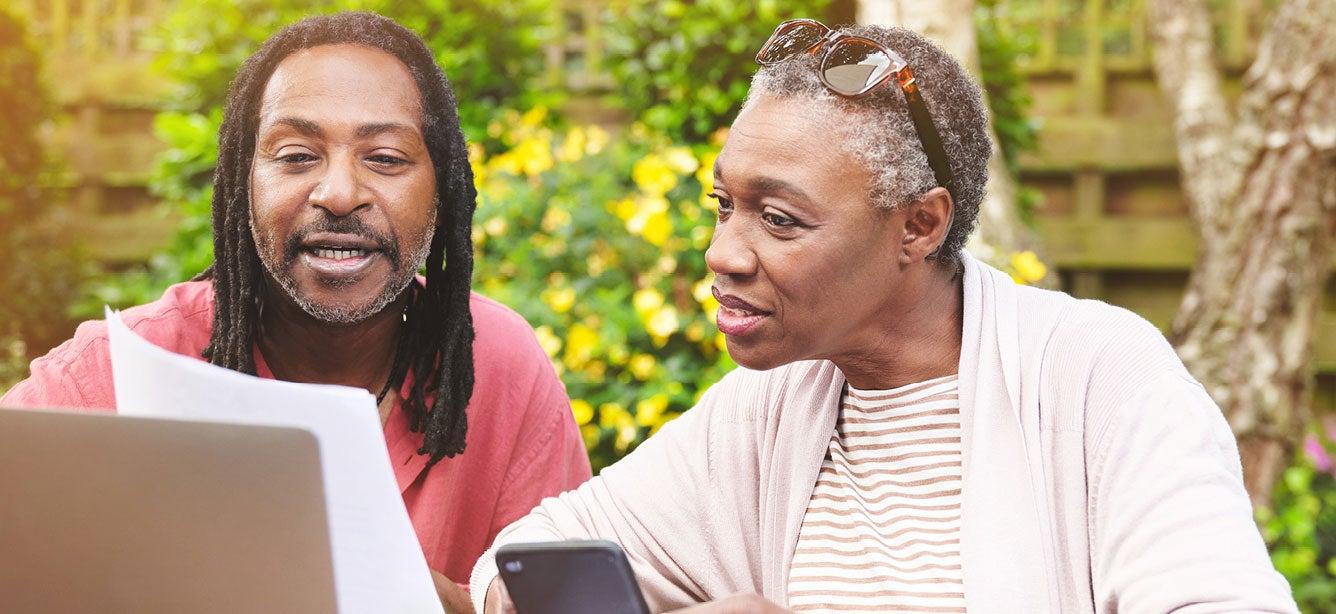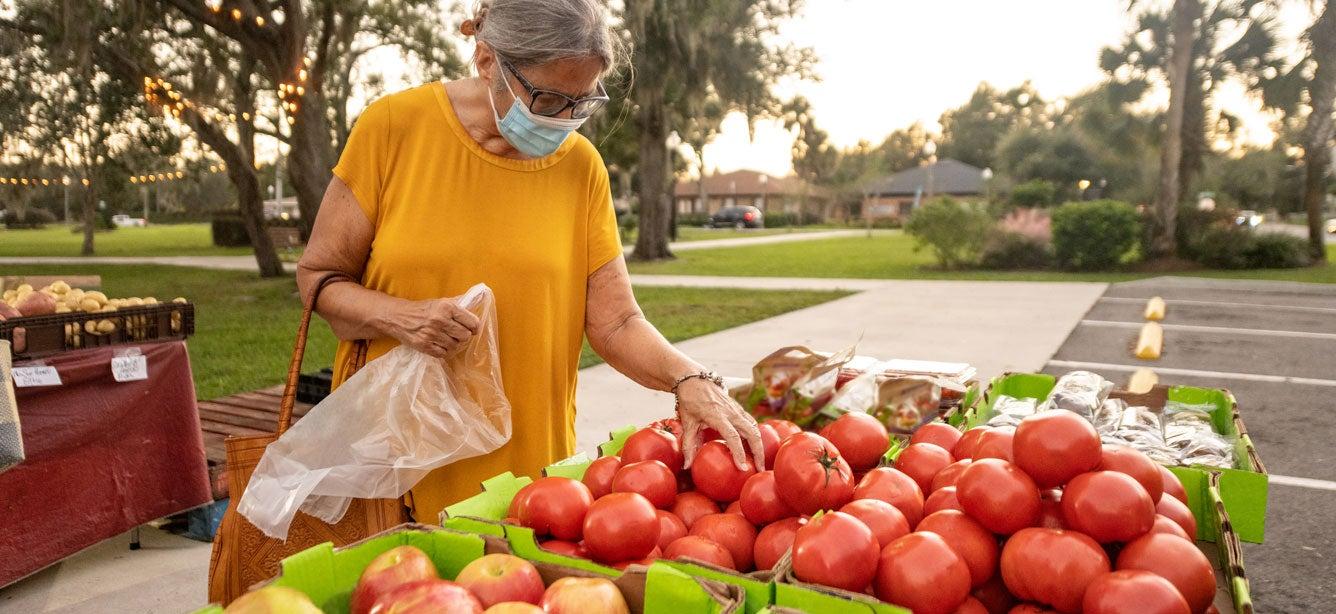
Related Topics
If you're on a fixed or low-income budget, how can you possibly get access to healthy food?
If you've ever wondered this, you're not alone.
In 2022, nearly 7 million older Americans were food insecure, and research shows this number could rise to 9 million by 2050.1
The good news is that help is already available and ready to be claimed. In fact, almost 9 million older adults who are eligible for the federal food assistance through the Supplemental Nutrition Assistance Program (SNAP) are not yet enrolled. This means only 30% of the older adults who qualify for SNAP are actually participating in the program.
Too many older adults either don’t know about the food assistance programs that are available or don’t know how to apply. We're hoping to change that.
Why is food insecurity in older adults important to address?
When older adults don’t consistently get enough healthy food to eat, it can have a harmful impact on their health. The effects of food insecurity include a higher risk of developing chronic diseases as well as mental health issues such as depression.
The bright side is that there are many benefits programs designed to help eligible low-income older adults get the food they need. These programs help older adults buy nutritious food at grocery stores and farmers markets and even get extra assistance in an emergency. Food assistance programs have the potential to change lives—and their benefits are there for the taking. A recent NCOA study found that older adults who enrolled in additional benefits experienced dramatic reductions in their levels of food insecurity. They also reported improvements in their social and emotional well-being.
Where can I find food assistance for older adults?
Whether you’re having trouble affording food for your own household, or you care for an older adult who needs food assistance, here are some great resources:
- Food Banks: Food banks in America range from small rural centers to large facilities in metropolitan areas. They help feed those in need by securing food donations from food retailers, manufacturers, growers, and other organizations. Feeding America operates a nationwide network of more than 200 food banks and 60,000 meal programs that serve people and communities in all 50 U.S. states as well as Washington, D.C., and Puerto Rico. Find a food bank in your local area, and contact them to ask about free food distributions near you.
- Meals on Wheels: This organization has a network of more than 5,000 independently run local meal distribution programs. In addition to delivering varied, nutritious meals, Meals on Wheels volunteers provide valuable social interaction and companionship as well as home safety checks with every visit. To find a Meals on Wheels program near you or an older adult you care for, visit its website and enter your ZIP code.
- SNAP (formerly Food Stamps): SNAP is the largest hunger safety net program in the U.S. and helps millions of older adults buy the food they need to age well. SNAP benefits can be used at large retailers like Walmart, grocery stores, and even farmers markets to buy fresh fruits and vegetables, meat, poultry, fish, milk, yogurt, bread, and other nourishing foods. While popular meal delivery options generally do not accept SNAP, some online grocery delivery retailers do. It’s a common myth that SNAP benefit amounts are low. The average SNAP benefit for a one-person senior household is $188 per month, or $2,256 per year.4 SNAP assistance is open to anyone who meets its eligibility requirements, which vary from state to state.
SNAP can provide an extra cushion for tight budgets. For example, Carlos M., age 71, recently lost his part-time job working at a supermarket. Despite getting some assistance from his family, he needed help buying food on a fixed income. Carlos applied for SNAP and was approved.
“My benefits are helping my monthly income and my ability to buy healthy food,” he told his local NCOA Benefits Enrollment Center.
- The Senior Food Box Program: Officially called the Commodity Supplemental Food Program (CSFP), this program helps eligible older adults improve their diets with healthy surplus food from the U.S. Department of Agriculture’s (USDA’s) commodity food list. The CSFP doesn’t provide enough food for a complete and well-rounded diet; however, it can serve as a helpful supplement to other food assistance programs you participate in. An individual Senior Food Box is estimated to contain about $50 worth of food—largely staples, such as pasta, canned fruits and vegetables, milk, and cereal.
- The Senior Farmers Market Nutrition Program (SFMNP): If you’re having difficulty keeping your fridge full, the SFMNP is another resource to explore. It helps eligible older adults purchase fresh, locally grown produce and other foods at farmers markets, roadside stands, and community supported agriculture programs (CSAs). Like the Senior Food Box program, the SFMNP is intended to supplement SNAP or another food assistance program, allowing you to stock up on a balanced selection of groceries.
Can NCOA connect me to food assistance programs in my area?
There are thousands of public and private programs available to help low-income older adults pay for food as well as health care, prescriptions, utilities, and more. However, millions of eligible older adults are missing out on these benefits because they either don’t know about the programs or don't know how to apply.
That’s why NCOA created BenefitsCheckUp, an online tool that can help you find programs that meet your unique needs in just a few minutes. Whether you need extra help affording groceries or home repair assistance, you can find it online, right from your phone, computer, or tablet.
After using BenefitsCheckup, Sharell and Tom from Phoenix, Ariz., told us: “We thought our income was too high to qualify. Turns out, we’re eligible for savings of up to $4,900 a year on our prescriptions.”
Checking your eligibility or finding out if another older adult is eligible is easy. Just visit BenefitsCheckup.org and enter your ZIP code to get started.
Sources
1. Feeding America. Facts about senior hunger. Found on the internet at https://www.feedingamerica.org/hunger-in-america/senior-hunger-facts
2. Nearly 60 Percent Increase in Older Adult Food Insecurity During COVID-19: Federal Action on SNAP Needed Now, Food Research & Action Center. Found on the internet at https://frac.org/blog/nearly-60-percent-increase-in-older-adult-food-insecurity-during-covid-19-federal-action-on-snap-needed-now
3. Hunger in Our Community: A Spring 2022 Status Report, Greater Chicago Food Depository. Found on the internet at https://www.chicagosfoodbank.org/news/hunger-in-our-community-spring-2022/
4. USDA. Characteristics of Supplemental Nutrition Assistance Program Households: Fiscal Year 2023. April 2025. Found on the internet at https://fns-prod.azureedge.us/sites/default/files/resource-files/snap-FY23-Characteristics-Report.pdf



